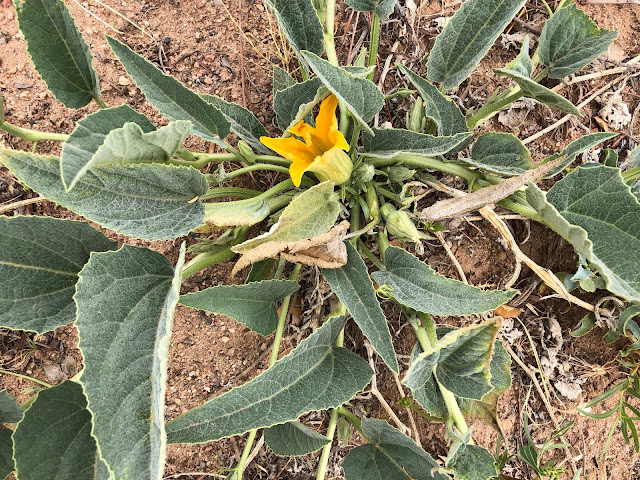By guest writer, Dwight Sims
For over 13,000 years humans have lived in New Mexico and they have left records of their lives throughout the state. I went recently with two friends, Bob and Carolyn Florek, on an archeologist guided tour of the San Cristobal Pueblo site in the Galisteo Basin, which was occupied from about 900 to 1600 CE.
Because it is on private property and not usually open to the public, the Pueblo site is relatively undisturbed. Its estimated 1.600 rooms are now just mounds
of eroded adobe, but its middens are treasure troves of 700 years of pottery sherds.
of eroded adobe, but its middens are treasure troves of 700 years of pottery sherds.
 |
Carolyn found this double notched arrowhead, beautifully made,
and returned it, reluctantly, to the midden
where it remains part of the archeological record. |
In the large rocks above the Pueblo its inhabitants left a spectacular record of many thousands of petroglyphs, images pecked into the rock, many of which are enigmatic. But they still have much to tell us. In them we could recognize often images of the hunt, food animals, and snakes:
We saw several panels containing deer or elk that seem grander than mere food:
And there were images of the horned serpent god known among the Pueblos as Awanyu, a bringer of rain and related to Quetzalcoatl, the Aztec god of death and resurrection. The activities of the beings next to the vertical snakes are up to you to interpret!
And here is an eagle captured by another being, human or otherwise. The Hopi today still capture eagles for spiritual ceremonies and then release them.
We saw pictographs also, paintings that survive under rock overhangs, this one likely of shamans or medicine men:
Perhaps the most impressive panel we saw was this one, probably added to over centuries, that portrays the natural and spiritual worlds undivided. There is corn, the food of life, a rabbit (sitting upright on the right), a turkey, two pronghorn and other animals and birds. There is also a spirit bear with stars, traditionally called on in healing ceremonies, a horned serpent facing the corn, and several kachinas, some with one or two horns. In one way or another all these spirit beings connect heaven and earth and in Pueblo tradition maintain the cycle of life.
Another panel shows a two horned kachina bringing rain down on the earth
as they are believed to do today in response to the frequent Pueblo dances
that help to maintain harmony in the world:



















































